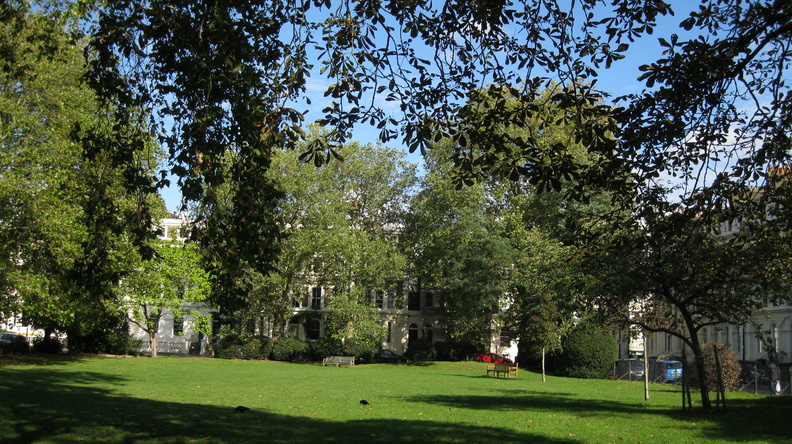Albert Square (Lambeth)
Brief Description
Albert Square was part of mid-C19th development in the area that was previously market gardens and agricultural land. Built by Islington builder John Glenn, the square was laid out on as grand a scale as in Kensington. The 4-storey houses enclosed a private communal garden provided for the use of residents. Now open to the public, the square is largely grassed and has slightly undulating ground with perimeter trees and modern railings. Mature trees include London plane and holly.
Practical Information
- Site location:
- Albert Square
- Postcode:
- SW8
- What 3 Words:
- trial.riders.apples
- Type of site:
- Garden Square;, Public Gardens
- Borough:
- Lambeth
- Open to public?
- Yes
- Opening times:
- unrestricted
- Special conditions:
- Facilities:
- Events:
- Public transport:
- Tube: Oval (Northern). Bus: 2, 88, 155
- Research updated:
- 01/03/2002
- Last minor changes:
- 19/07/2023
Please check with the site owner or manager for latest news. www.assaweb.org
Full Site Description
The area was once part of the old Manor of Vauxhall, and was largely agricultural until development began in the early C19th. In 1793 two areas of land known as the 14 Acres and Pightle were purchased by John Wilkinson of Woodford, who bequeathed his estate to two nephews when he died in 1818. In 1843 an Act of Parliament enabled the granting of building leases for the development of the estate and Albert Square and the tree-lined roadway leading to Clapham Road represents the first area to be built. Albert Square was laid out on the 14 Acres site, the plot having been leased to the Islington builder John Glenn. Glenn laid out the square on as grand a scale as in Kensington. The four storey houses enclose a communal garden of grass, shrubs and mature trees including London plane and holly. The OS map of 1870 shows an elaborate network of paths, with numerous trees. In 1928 it was maintained by the Trustees of the estate of joint owners Mr A C Pensam and Mr J F Budge, and may have been subject to a deed that stipulated that it should be preserved as open space. At that time lessees of houses in the square had the right to use the garden on payment of an annual rent of £1 per house for its maintenance. When the Victoria Line was constructed a shaft was sunk in the garden. Now publicly accessible, the square is largely grassed and has slightly undulating ground with perimeter trees and modern railings. Former residents include Arthur Rackham, who lived at No. 27.
Sources consulted:
Bridget Cherry & Nikolaus Pevsner, The Buildings of England: London 2: South (Penguin) 1999; Report of the Royal Commission on London Squares, 1928; Albert Square Conservation Area Statement, 2009
Further Information (Planning and Conservation)
- Grid ref:
- TQ306770 (530650,177050)
- Size in hectares:
- c.0.29
- Site ownership:
- private
- Site management:
- Albert Square and St Stephens Residents Association
- Date(s):
- 1846-7
- Designer(s):
- Listed structures:
- LBII: 1-5, 33-36, 24-32, 6-14, and 15-23 Albert Square
- On National Heritage List for England (NHLE), Parks & Gardens:
No- Registered common or village green on Commons Registration Act 1965:
No- Protected under London Squares Preservation Act 1931:
Yes
Local Authority Data
The information below is taken from the relevant Local Authority's planning legislation, which was correct at the time of research but may have been amended in the interim. Please check with the Local Authority for latest planning information.
- On Local List:
- No
- In Conservation Area:
- Yes
- Conservation Area name:
- Albert Square
- Tree Preservation Order:
- Yes
- Nature Conservation Area:
- No
- Green Belt:
- No
- Metropolitan Open Land:
- No
- Special Policy Area:
- No
- Other LA designation:
- Protected London Square; Article 4 Direction
Please note the Inventory and its content are provided for your general information only and are subject to change. It is your responsibility to check the accuracy.





